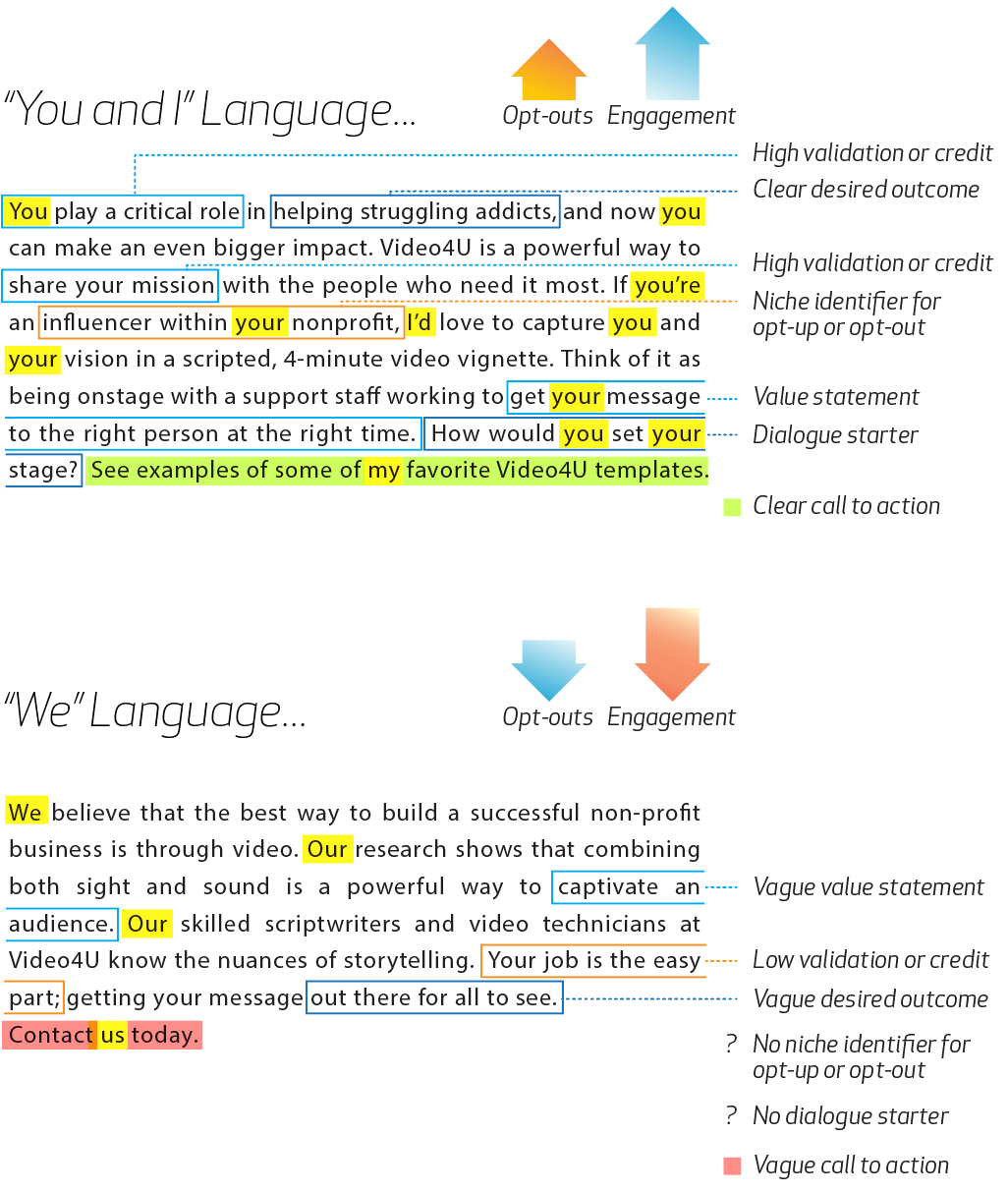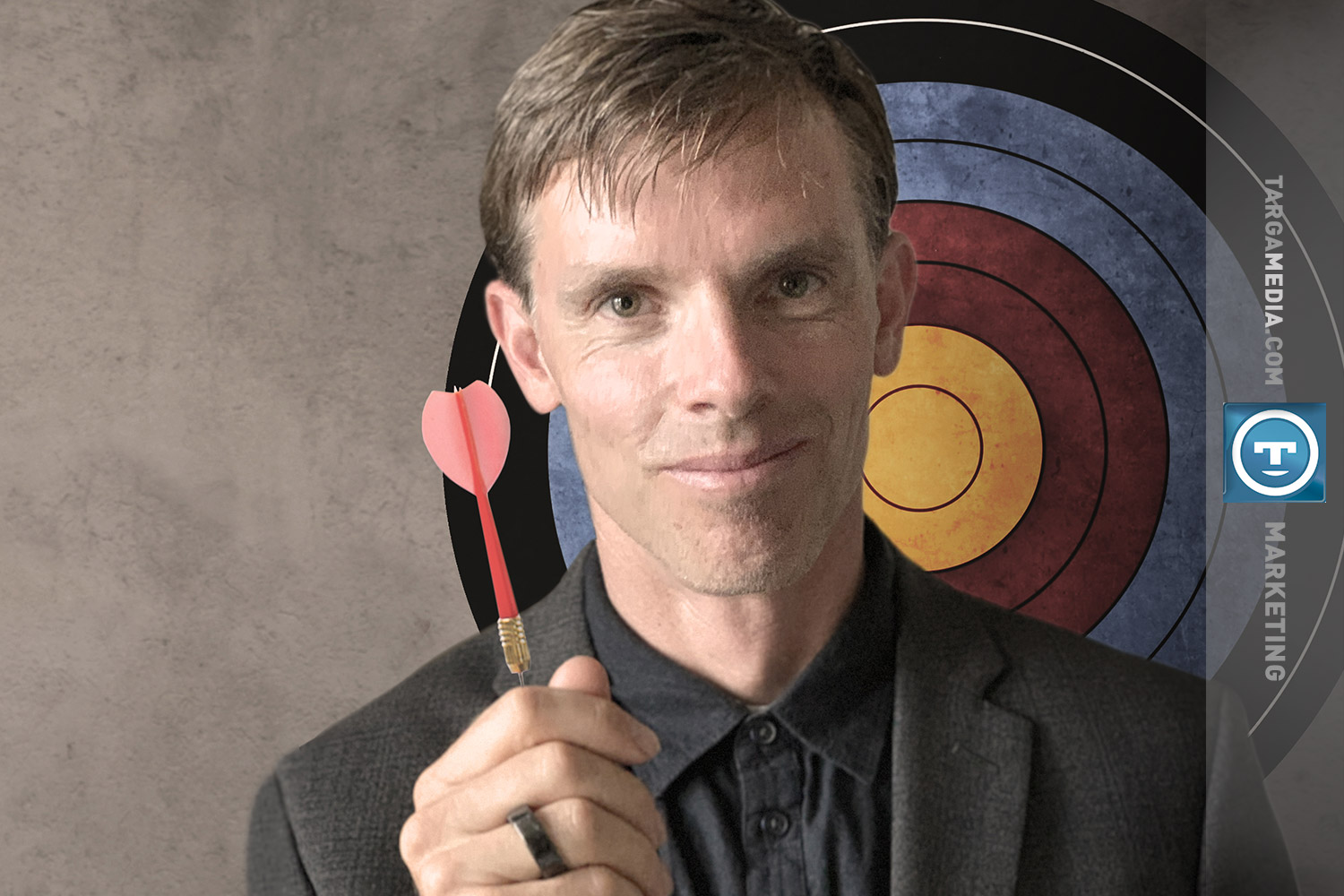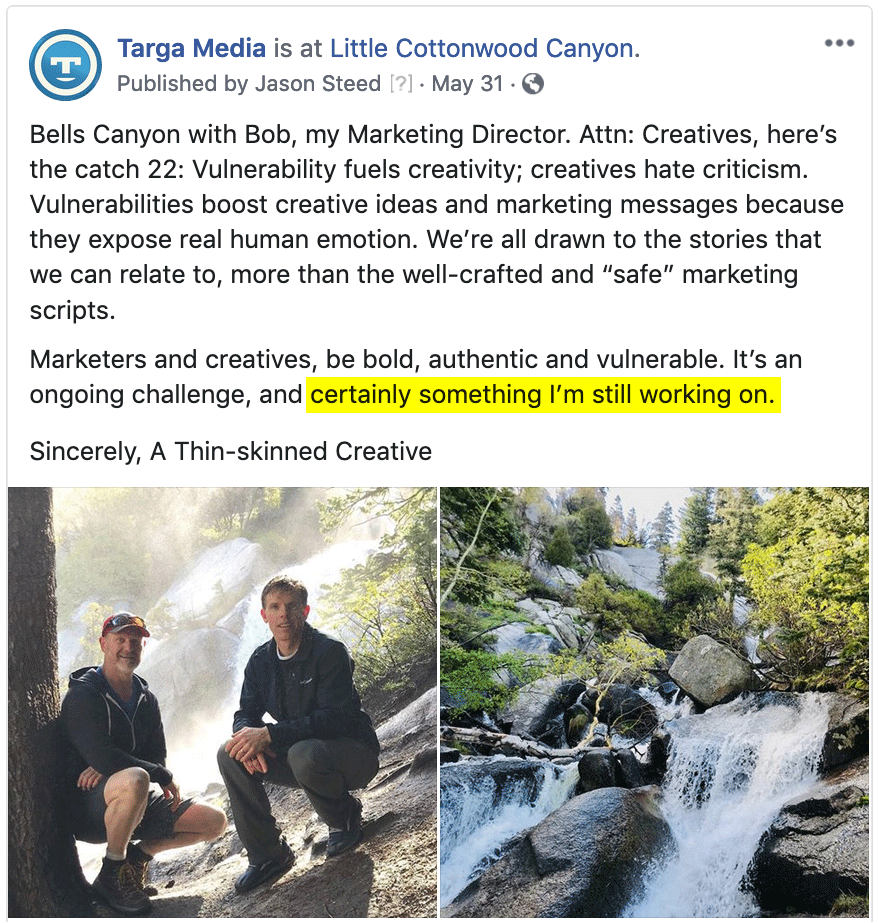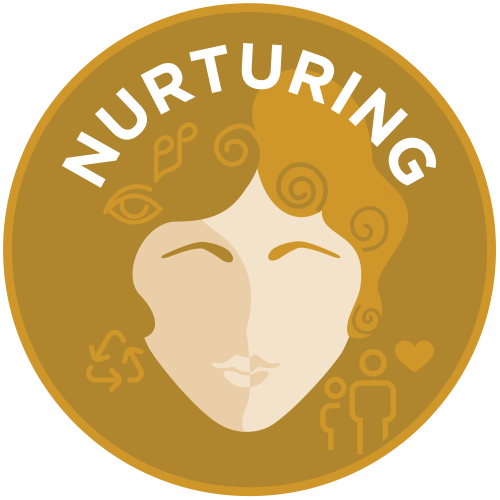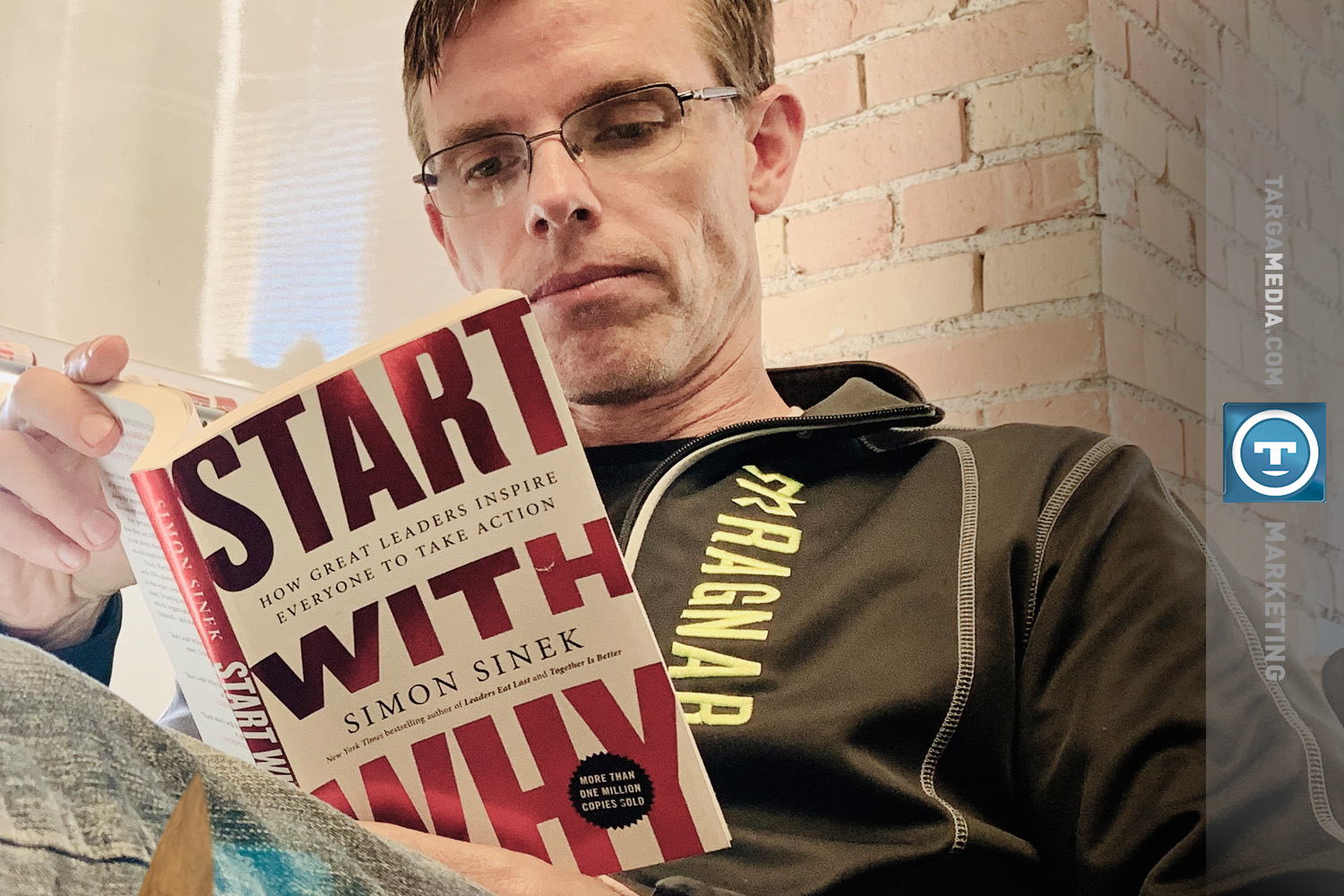
Marketers, Start with Why. Here’s Why…

Jason Steed
Owner & CEO
Marketers, Start with Why. Here’s Why…
Somebody in your target audience will really connect with the pitch you’re writing this week. But only if you tell them why. I hope that these tools and examples help you focus your energy on the audience that matters most…yours!
This week, I posted about my triumph in making bone broth from Thanksgiving’s turkey carcass. I had all the important stuff: A catchy intro, a real-life hero photo, language that humanizes, and selling points like “healthy, resourceful, and savory.” Yes, even a Call to Action to download the recipe. Voila, the perfect social media post! Right?
It turns out, not so much. The first comment I got back from my target audience was…less than ideal: “Why do I need bone broth?”
I had missed one very vital ingredient in my social media post recipe. I hadn’t started with “why.” If I expected anybody to click through, or “convert” or even “like,” then I had missed the boat. I needed to start with the “why.”
I needed to share what it was that even got me thinking, researching, cooking, bragging and drinking bone broth in the first place. These answers were second-nature to me—not even on my radar. Yet these were the pivotal conversation starters.

Knowing the “Who” helps to define the “Why”
You may have noticed that I haven’t brought up the “who” as much as the “why, what and how.” I assure you that identifying your target audience is at the center of my attention and the marketing services we offer. For me, the “why” is a powerful extension of my marketing focus. In my brain, a marketer’s order of importance starts with Who, then goes to Why, then What, then How. Here’s an example:
Let’s say you were marketing a new property insurance plan to customers currently enrolled in a starter insurance product. You’re anxious to get the word out on some powerful and cost-saving home insurance features that you’re certian will resonate with your customers. After all, they already use your product and love and understand its intrinsic benefits…right?
Let’s Roleplay: Two Examples in Property Insurance
- Product: Property Insurance – Powerful monitoring and protection upgrades
- Audience: Existing customers of your base products
- Goal: Convert 20% of target audience to the new and improved product
Audience 1 Example
- Who: Nurturing-minded
- Why: Safety and lasting peace of mind for me and my loved ones
- What: Everybody gets taken into account with a more powerful and modular property insurance plan.
- How: Enroll online, or call me. I’ll help you upgrade without anything falling through the cracks.
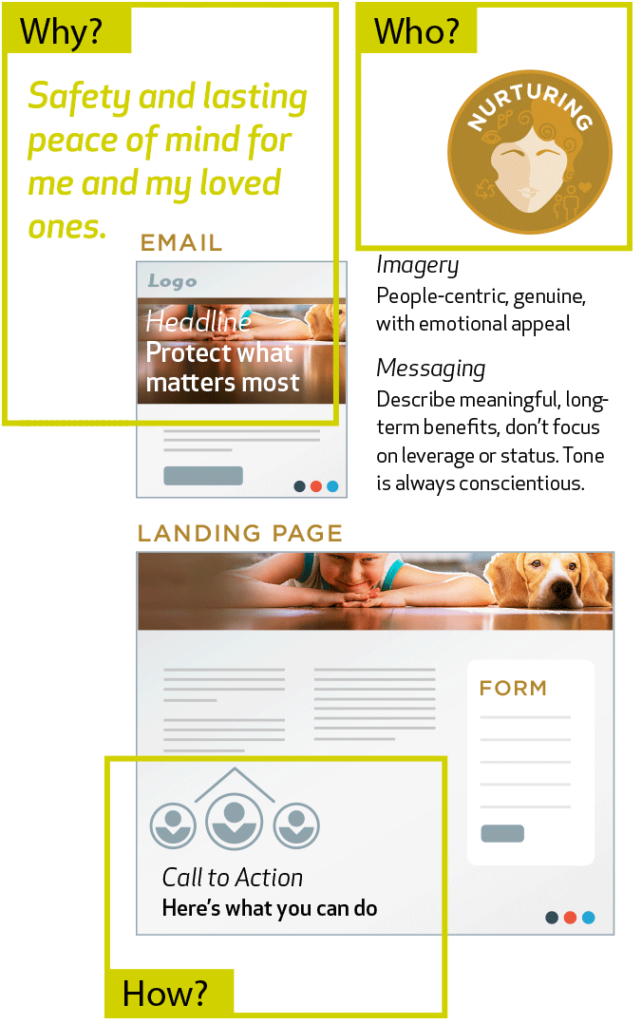
Audience 2 Example
- Who: Practically-minded
- Why: I just want to know that ALL my stuff is protected
- What: Let’s upgrade to a plan that doesn’t generalize. Everything has its own value, and it doesn’t make sense to over-insure or under-insure.
- How: Enroll online. As an existing customer, the upgrade process is easy and thorough. Just as with others who have upgraded, you’ll see savings starting with your next billing cycle.
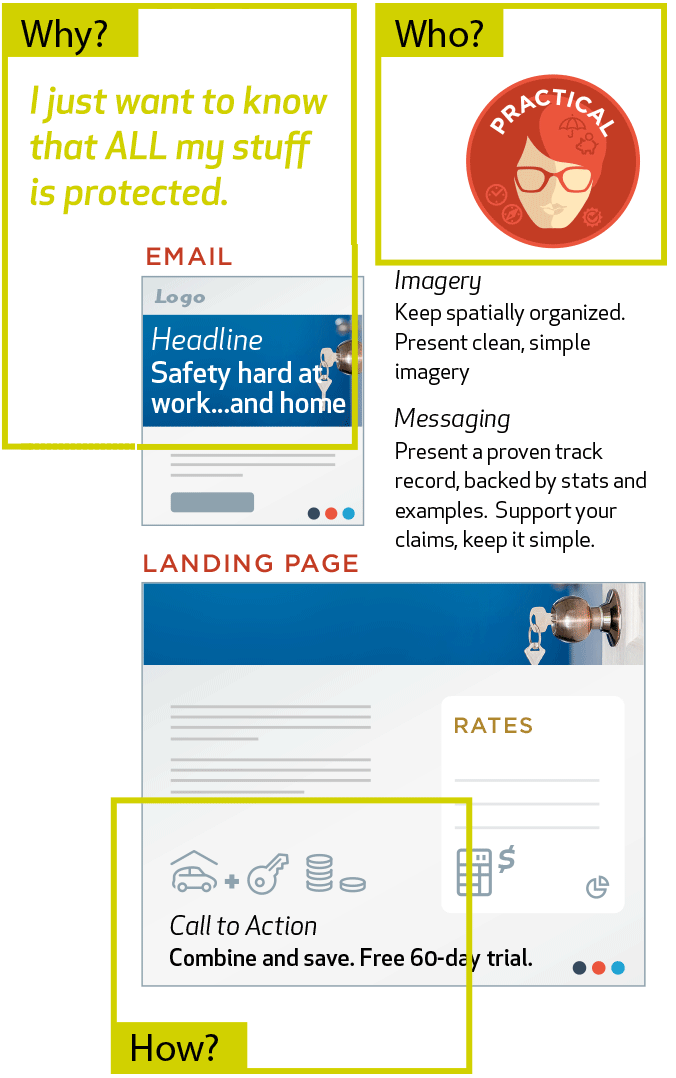
My target audience for this campaign is busy, mid-life professionals juggling family and health changes that come with aging. This audience is trying to figure out how to eat healthy on the go, and how to find the time and energy to “show up” day after day. See, I knew the “who,” but I confused the “why.” If, however, my social media audience was comprised of chefs, nutritionists, and biohackers then my post would’ve resonated very well.
I recently had an opportunity to pitch our marketing services to a local IT company. The co-founder gifted me this book by Simon Sinek, “Start with Why, How Great Leaders Inspire Everyone to Take Action.” I read it and loved it. It made so much sense, how your good idea is only good if it gets heads nodding and thumbs upping. Otherwise it’s worse than a bad idea. It’s no idea at all. Even bad ideas get heads moving, albeit shaking instead of nodding. Good ideas and bad ideas communicate because they get heard. They progress in a linear fashion—they springboard. This happens because they start with the “why.”
Humans are linear. Companies, shoppers, and shareholders are linear. Our brains make decisions based on instinct, survival, priorities, and perceived value. The “why” is the first step with our brains. If we resonate with the “why” then we’re interested—and hopefully invested—in the “what, how, when, where, etc.”
Sinek’s book, on the whole, offers tools for transformational leadership, but I found some very insightful “brain wiring” goodies that pertain to marketing messaging at large.
Maybe this exercise will help you, as it did for me. Ask yourself, “What motivates me to show up and be a valuable contributor in my home, at work, in social circles, and more?
Your mission statement without the why:
- “I love to excel because I really enjoy what I do and the roles I play. I’m motivated by challenging decisions.”
Not a bad motivational mantra, but consider how the “why” is missing here. What roles are you playing? What types of decisions are challenging? Why are you motivated by challenging decisions? Without the “why” you can see how you create more questions than answers. True, questions can be provocative, but only after engagement. Providing the “why” will engage your customers in mental (and ultimately literal) dialogue with you.
Your mission statement with the why:
- “It may seem strange, but I’m motivated each morning knowing that I’ll encounter brand new challenges. I somehow find motivation in the unexpected. I think I would get bored pretty quickly if I were just recycling the same solutions to previous problems.”
Whether this person shares your same enthusiasm for new challenges or not, you’ve got to admit that there’s something here that drives us toward the “what” and the “how” of this person’s example.
Many of these “who” principles make up our relationship marketing tools, while Sinek’s book focuses more on the “why.” There are some great insights and practical tools to be found, such as the Three Degrees of Certainty, crafting a Mission Statement with substance, and much more. I’d encourage you to give it a read. I did, because the person who gifted it to me told me “why” he read it and “why” he found value in it.
There are lots of benefits from your products and services. Much like bone broth, your services are versatile, affordable, and rich with flavor (maybe). My audience of busy mid-life professionals didn’t know what to do with bone broth. I knew they would benefit from it, but THEY didn’t know. I should’ve shared my “why.” I should’ve told them how convenient it is in my own on-the-go life, and how it fills the gaps when conquering the world gets in the way of refueling my body and my mind.


